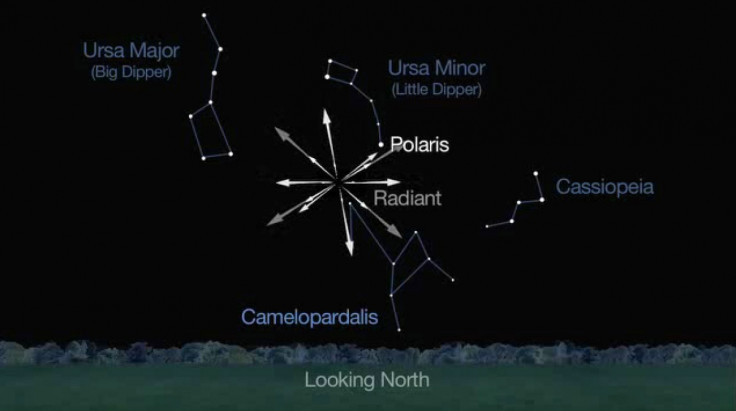Camelopardalid Meteor Shower: FM Radio can Capture Sound of Shooting Stars from Comet 209P/LINEAR
The Camelopardalid meteor shower, which has never before been seen, can also be "heard" on the radio.
The event is set to take place on the night of 23 May, when the Earth passes through a trail of pieces of rock and ice broken off from Comet 209P/LINEAR, a faint comet that was discovered in 2004 by the Lincoln Near-Earth Asteroid Research initiative.
Although the meteor shower will not be visible in the UK as it will occur after sunrise, it may be possible to hear the sounds of shooting stars on the radio.
Meteors emit gases as they burn entering our planet's atmosphere. If the meteor is at a certain altitude when the gases are released, incoming radiation from the Sun will ionise them. Once this happens, they will reflect radio from distant vicinities and cause the waves to bounce to locations they would normally not travel to.
The ionosphere is the crucial atmospheric zone for this process, as reported by Joe Rao for Space.com. The zone begins around 53 miles and ends approximately 370 miles above sea level, and influences human radio transmissions and atmospheric electricity across the world.

This zone usually reflects frequencies below 30 megahertz (MHz), but it is transparent to higher frequencies, such as the FM broadcast band (between 88 to 108 MHz).
Yet this changes when the Sun's radiation ionises the ionosphere's air particles - which causes FM signals to be bounced back down to Earth.
Rao draws attention to the lowest zone of the ionosphere, the E layer, where most meteors are seen. When they pass through this region, they may emit radio signals which are perceptible on an FM radio.
The lower frequency end of the FM dial, below 91.1 MHz, is more likely to pick up the celestial sounds. Media UK provides a list of FM radio stations in the UK.
You may hear brief sections of background noise, as well as whistling and popping sounds. The "hiss" you hear when tuned into an "empty" radio frequency may be interrupted by a "boom" of noise.
According to Space Reporter, it may be beneficial to tune into a radio station located to your east or west, between 800 and 1,300 miles from you, because Comet 209P/LINEAR's radiant will be towards the northern part of the sky.
The meteor shower will be visible for skywatchers in the US and according to USA Today, the Earth's orbit will intersect the comet's debris fields from 18:03 to 19:24, and may make it a "storm".
Bill Cooke, a Nasa meteor expert and head of the US Meteoroid Environment Office at the Marshall Space Flight Center, told Space.com: "We expect these meteors to radiate from a point in Camelopardalis, also known as 'the giraffe,' a faint constellation near the North Star."
© Copyright IBTimes 2025. All rights reserved.






















